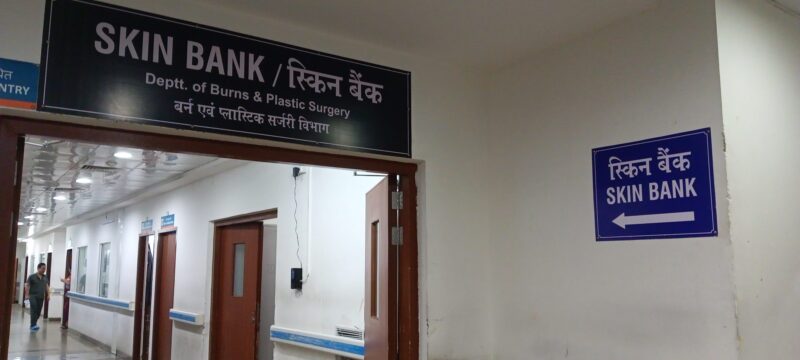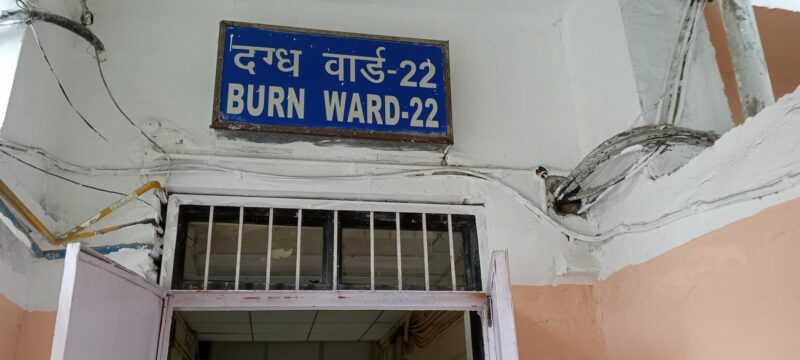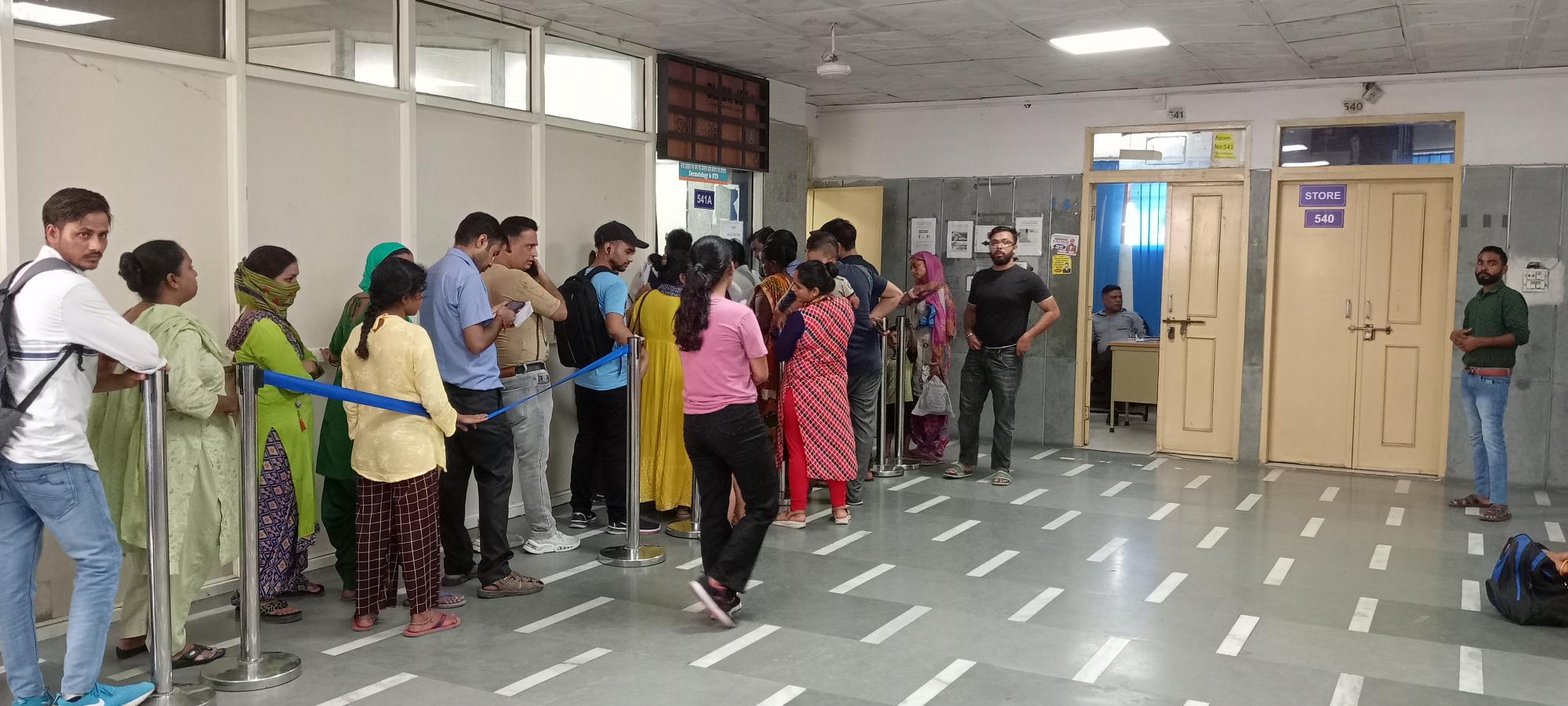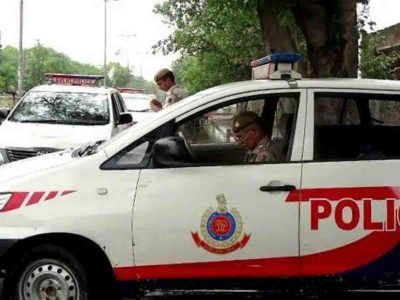North India’s first skin bank at Delhi’s Safdarjung Hospital has brought with it hopes of survival for many burn victims.
A skin bank is a facility where the skin of deceased persons can be extracted, processed and stored to be able to donate it to patients suffering from extensive burn injuries.
In India, 7-10 million people sustain burn injuries every year, making it the second most common cause of injury after road accidents, as per Safdarjung Hospital. However, the country has only 16 skin banks with seven in Maharashtra, four in Chennai, three in Karnataka, and one each in Madhya Pradesh and Odisha.
While the skin bank was inaugurated on June 21, it is yet to be fully functional due to “logistical issues”. But it will see the light of the day “real soon”, said Dr Shalabh Kumar, the Head of the Department of Burn and Plastic Surgery.
Skin bank vs grafting
Even though both skin banking and skin grafting belong to the same department of medical science, they are distinct from each other.
“Skin grafting is a process where we surgically remove the superficial layer of skin and transplant it on the burn-affected area. It is a surgical procedure that helps to replace skin that is lost or has damage to it, improve its appearance, and restore function. It is part and parcel of plastic surgery, which is a broader area of science. People in India have this wrong notion that plastic surgery is about beautification. ‘Plastic’ means to mould. In surgery, we use this technique to save lives,” Dr Kumar explained.
Skin grafting can be done using the affected person’s own skin also. On the other hand, a skin bank is a facility that stores skin donated by those who have passed away.
“For skin banking, we retrieve the skin from diseased donors and process it according to some protocols. Then store it and use it on the required patients. Here deceased donors mean after death. Within six hours of death, we have to take the skin. Sometimes it can be eight hours depending upon the temperature of the skin. Like in winter, the hours can be stretched a little more,” he said.
The hospital is not at liberty to extract the skin of the deceased person.
“We can at best request. It’s up to the wish of the dying patient and/or their kin — much like organ donation,” the HOD said.
While the idea of skin donation is the same as that of any other organ, it is distinct and has a more hassle-free procedure.
In the case of organ donation like kidney or liver, it is done after the brain stem death, whereas skin is only retrieved after the patient has passed away.
“We have to wait until the person is dead and not just brain dead,” Dr Kumar said.
Anyone can donate skin, but only cases of viral infections like Hepatitis B, C, HIV, Pulmonary infection, septicemia, active jaundice and eczema, are exceptions.
Life saviour
A skin bank is not the only option for burn patients, but it is a boon for those who have over 70% to 80% burns. So far, hospitals would conduct plastic surgery using the skin of the same patient. However, when the degree of burn is high, chances of survival diminish. This is what will change now with the skin bank.

“It is basically for patients who have extensive raw burn areas. So, using their own skin for grafting is not possible. That’s when the skin bank is most important. Earlier, we used to conduct surgeries little by little because a patient with 80% burn will not have the ability to take any operative procedure. So, it’s life-saving for extensive burn victims,” Dr Kumar said.
Stressing how a skin bank will bring down mortality rate of burn patients, Dr Kumar said, “Skin is the largest organ of the body. It is the best dressing. The moment we transplant skin on the injured area, it will automatically end pain and chances of infection because micro-organisms won’t be able to enter the patient’s body. The patient’s immunity and survival chances will increase. This way, there will be less disfigurement and reduced hospital stay, also significantly reduce the cost of treatment.”
If the patient’s skin is severely burned or damaged and the area is not covered with a skin substitute, they may develop an infection. Therefore, an easy and quick source of skin helps patients in many ways.
Glimmer of hope
Huddled up on a rug outside the Burns and Plastic Surgery department, Safdarjung Hospital, Meena Bagri is waiting for “the bad news” as her elder brother is admitted in the intensive care unit with 65% burn.
“I have been informed that he is too critical, his injuries are such that I believe it’s better for him to go than suffer,” she said, whimpering.
Her brother, Ratan, was at his home in Rewari (Haryana) when their cylinder exploded. His neighbours rushed him to a local clinic, where burn treatment was not available and was rushed to Safdarjung Hospital. By the time he reached the hospital, his injuries had already aggravated and the degree of burn rose to 65%.
“We heard about the new skin bank, which will apparently save lives. I guess my brother will not survive by then. But, hopefully, this will help someone else’s family from going through what we are feeling now,” she said.
A burn injury could be thermal burn, acid, accident or fire incidents.
According to the Delhi Fire Services’ data, 327 people were injured and 70 dead in fire incidents in 2021.
Santosh Negi, a third-year B. Com. student at PGDAV college, is unable to process his parents’ accident. While his mother survived the incident with minor injuries, his father is undergoing treatment for 45% burn.
“His injuries are fresh and will take some time to heal as per the doctors. He may have to be at the hospital for another three weeks until his injuries are completely taken care of,” Negi said, adding that a skin bank “would be like God’s service”.
On June 21, Dr Kumar described the inauguration of the new facility as a “momentous occasion”. A press statement quoted him as saying, “It is a feather in the cap of the hospital and a significant achievement.”
However, soon after the inauguration of the skin bank, there was chaos outside it as few patients had turned up hoping for treatment.
“There was some miscommunication within the departments, which misled patients initially. They thought that the skin bank is already functional. We cannot always monitor which person is going where so maybe few people landed up there as they heard about the skin bank,” said the Chief Medical Officer of the New Emergency Block (NEB), inside which the skin bank has been inaugurated.
The NEB is a few lanes away from the Burn and Plastic Surgery Department.
Success rate
Skin grafting through a bank has “a great success rate”.
“The whole procedure to retrieve the skin from a donor takes 40-45 minutes. Then we conduct few tests and send it for bacteriological analysis. It should be free from micro-organisms. That process takes some time – around five to six weeks. Then we can store it for 3-5 years,” Dr Kumar said.
“It decreases mortality, increases survival rates in patients and helps them achieve better healing outcomes,” he said.

Elaborating on the process of the extraction of skin, Dr Kumar said, “We take skin only from lower limbs and back (the invisible portions) and then the cremation or burial can be done as usual, without hurting the dignity of the donor. There is no disfigurement or bleeding.
“Other organ transplantation requires matching of blood group, tissues and other similar things. However, for skin donation we don’t need such matches. You can use one’s skin on anybody — children to adults. Besides, for example in cases of kidney transplant, patients have to take life-long immune-suppressive drugs, there is no such post-operation requirement for skin donation. Even for the burn patients, they wouldn’t have to go through any dermatological tests to receive the skin of another person. All they would need is plastic surgery or the transplantation of skin,” he added.
Dr Kumar emphasised on the need to spread awareness about skin donation as there is “little to no awareness”.
“We need more people to know that skin donation is possible. Rather, people should come forward to donate because this will save lives, especially that of children.”





